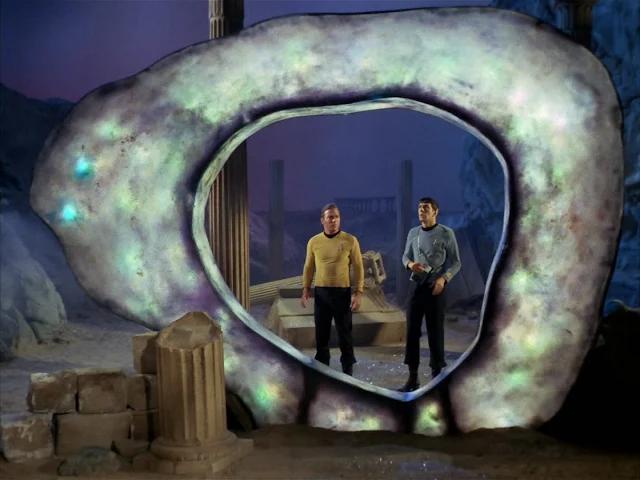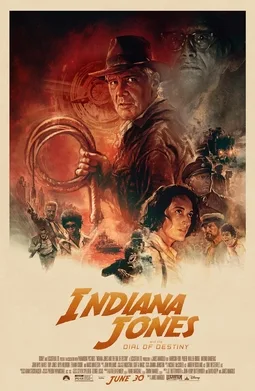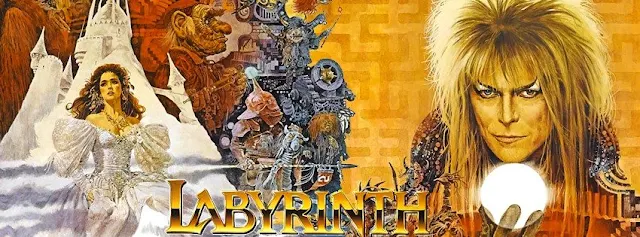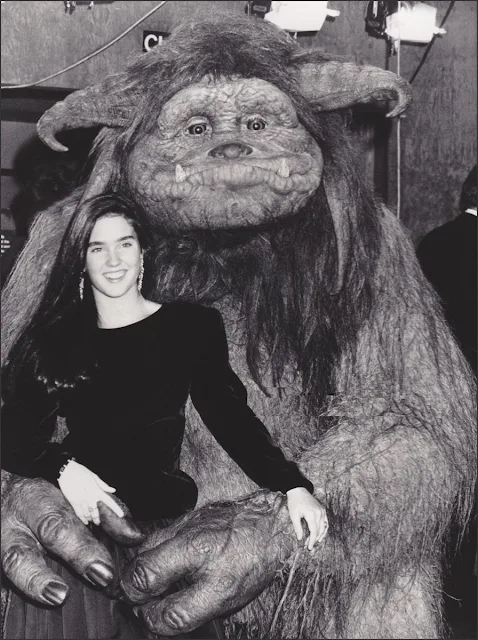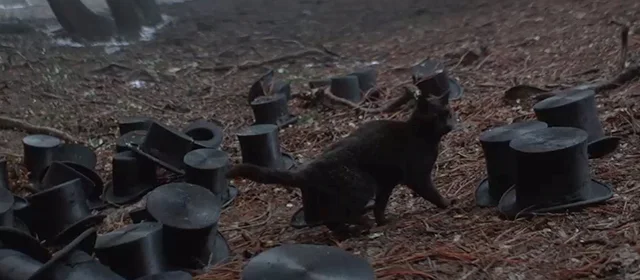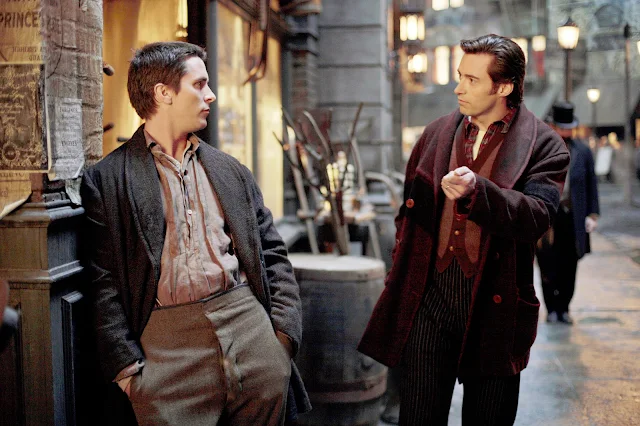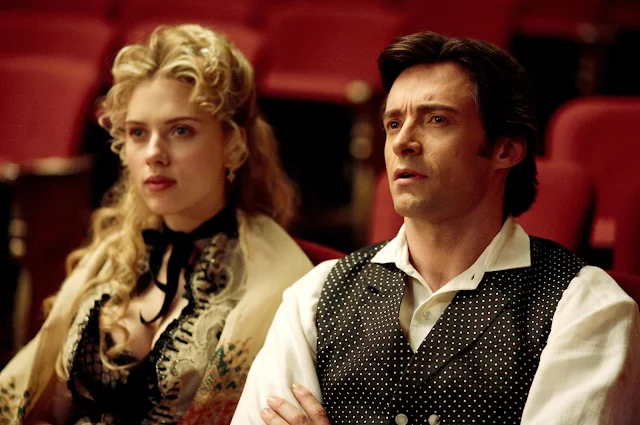"Labyrinth," directed by Jim Henson, is a fantasy film that was released on June 27, 1986. The movie follows the story of a young girl named Sarah, played by Jennifer Connelly, who enters a magical labyrinth to rescue her baby brother from the clutches of the Goblin King, Jareth, portrayed by David Bowie.
During the film's production, Jim Henson collaborated with renowned fantasy artist Brian Froud to develop the visual style and creatures of the Labyrinth. Froud's distinctive designs, characterized by intricate details and whimsical elements, played a significant role in creating the film's enchanting atmosphere.
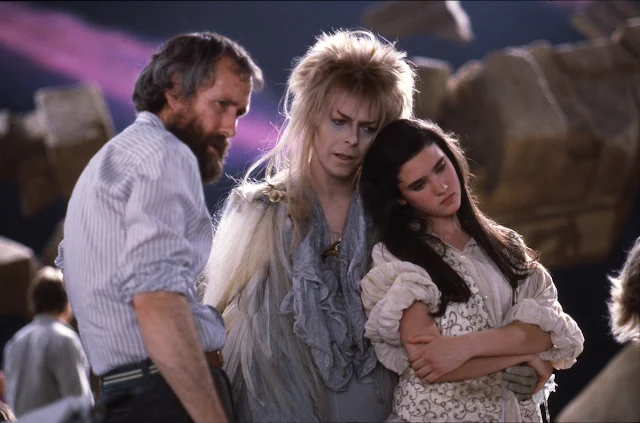
Another notable aspect of "Labyrinth" is the intricate maze set that was constructed for the film. The set, comprising over 50,000 square feet, was built at Elstree Studios in England. It featured winding corridors, secret passages, and various practical effects to create a believable and immersive labyrinthine environment.
Since its release, "Labyrinth" has gained a dedicated fan base, inspiring fan art, cosplay, and even annual screenings in theaters and outdoor venues. The film's enduring popularity has led to discussions of a potential sequel or reboot over the years. While there have been rumors and speculations, no concrete plans have materialized as of my knowledge cutoff in September 2021.
Despite the absence of a direct continuation, "Labyrinth" remains an influential and beloved film. Its imaginative world, memorable characters, and the meticulous craftsmanship behind its puppetry and visual effects continue to captivate audiences, ensuring that the magic of the Labyrinth will continue to endure for generations to come.
Here's production trivia facts about the Labyrinth
1. The idea for "Labyrinth" originated from Jim Henson's desire to create a darker and more mature fantasy film that would appeal to both children and adults, following the success of his previous works like "The Dark Crystal" (1982).
2. Brian Froud, the renowned fantasy artist known for his work on books like "Faeries" and "Goblins!", collaborated closely with Jim Henson to design the visual style of the film. Froud's intricate and whimsical illustrations served as the foundation for the enchanting world of the Labyrinth.
3. The film's production took place primarily at Elstree Studios in England, where a massive 50,000 square feet labyrinth set was constructed. The set featured winding corridors, hidden doors, and practical effects to create a convincing maze-like environment.
4. The puppetry work in "Labyrinth" was handled by the Jim Henson's Creature Shop, which was responsible for creating the diverse cast of fantastical creatures. The team combined animatronics, puppetry, and skilled puppeteers to bring the characters to life with intricate movements and expressions.
5. To achieve the illusion of depth in the film, various techniques were employed, such as forced perspective, where different-sized sets and puppets were strategically positioned to create the illusion of distance. This technique added visual richness to the scenes and enhanced the overall fantasy ambiance.
6. The film's star, Jennifer Connelly, was only 14 years old at the time of filming. Despite her young age, Connelly demonstrated remarkable talent and professionalism throughout the production, capturing the essence of her character, Sarah, and holding her own alongside seasoned actors.
7. David Bowie was cast as Jareth, the Goblin King, bringing his unique charm and musical talent to the role. Bowie's ethereal presence and captivating performance added an element of mystery and allure to the character, making Jareth an iconic figure in fantasy cinema.
8. The iconic "Magic Dance" sequence, in which Jareth dances with a group of goblins, required intricate choreography and coordination between David Bowie and the puppeteers. The scene showcased the seamless integration of puppetry and live action, creating a whimsical and visually stunning moment.
9. Jim Henson's son, Brian Henson, worked as the puppeteer for Hoggle, one of the film's central characters. Brian's involvement in the project added a personal touch and continued the family legacy of puppetry established by his father.
10. The film featured a wide range of creatures and characters, each with their own unique designs and personalities. Notable examples include Ludo, a gentle giant; Sir Didymus, a loyal knight; and the mischievous Fireys, who performed a memorable musical number.
11. Many of the puppeteers who operated the creatures in "Labyrinth" were highly skilled individuals who had previously worked on Jim Henson's "The Muppet Show" and other puppetry projects. Their expertise and creativity brought depth and nuance to the characters, making them feel truly alive.
12. To create the illusion of characters speaking, the puppeteers would operate the puppets while hidden beneath the set. They would watch the scene on monitors and synchronize their movements and dialogue accordingly, giving the impression that the puppets were speaking in real time.
13. The film's production faced several challenges, including the complexity of coordinating puppet movements, troubleshooting animatronics, and ensuring the lighting and camera angles were optimized to capture the magic on screen. The dedication and perseverance of the production team were vital in overcoming these obstacles.
14. The film's soundtrack, composed by Trevor Jones, combined orchestral arrangements with David Bowie's original songs. The music served as a narrative tool, heightening the emotional impact of key moments and further immersing the audience in the fantastical world of "Labyrinth."
15. One of the most intricate puppet designs in the film was for the Junk Lady, a character made entirely of discarded objects. The puppet required meticulous attention to detail and coordination to bring the character to life convincingly, showcasing the incredible craftsmanship of the puppeteers.
16. In addition to the physical puppetry, "Labyrinth" also utilized blue screen and green screen technology to composite various elements and create seamless visual effects. This allowed for the integration of live-action footage with the fantastical environments and creatures, enhancing the overall cinematic experience.
17. The film's elaborate costumes, designed by Ellis Flyte, contributed to the rich visual tapestry of the Labyrinth. The costumes showcased a mix of intricate patterns, textures, and vibrant colors, further bringing the fantastical characters to life.
18. "Labyrinth" incorporated elements of mythology and folklore, drawing inspiration from various sources such as Celtic and European folklore. This infusion of mythological elements added depth and resonance to the story, making it resonate with audiences on a universal level.
19. The film's script was written by Terry Jones, best known as a member of the comedy group Monty Python. Jones brought his unique wit and humor to the screenplay, infusing the story with clever dialogue and comedic moments.
20. The puppets used in the film were meticulously crafted by a team of skilled artisans and artists. Each puppet required hours of labor and attention to detail to achieve the desired level of realism and expressiveness, showcasing the commitment to excellence in puppetry.
21. To create the illusion of characters walking through the Labyrinth, a combination of practical sets and visual effects was utilized. The sets were carefully designed to seamlessly transition between real and constructed environments, enhancing the sense of adventure and exploration.
22. The film's editing, handled by John Grover, played a crucial role in maintaining the pacing and narrative flow. The seamless integration of puppetry, live-action footage, and visual effects required precise timing and coordination, showcasing the technical expertise behind the scenes.
23. Despite the film's mixed initial reception, "Labyrinth" has gained a dedicated following over the years, with fans drawn to its unique blend of fantasy, music, and imaginative storytelling. The film's enduring popularity is a testament to its timeless appeal and the artistry involved in its creation.
24. "Labyrinth" marked the final feature film directed by Jim Henson before his untimely death in 1990. The film stands as a testament to Henson's creative vision, innovative approach to puppetry, and his ability to create immersive and captivating worlds on the screen.
25. Over the years, "Labyrinth" has inspired countless artists, filmmakers, and storytellers, leaving a lasting impact on the fantasy genre. Its influence can be seen in subsequent films, television shows, and even video games, solidifying its place as a beloved classic in the realm of fantasy cinema.


